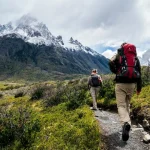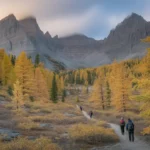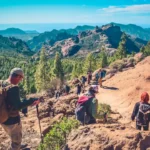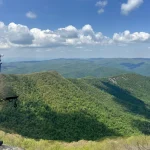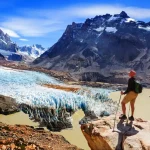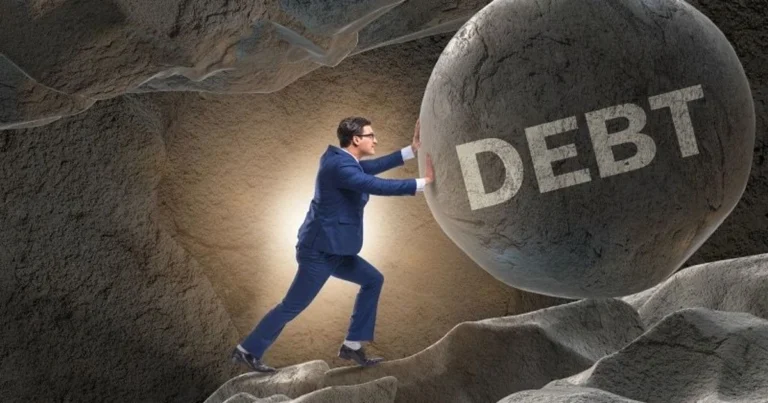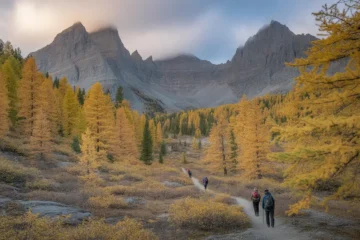
Huayna Picchu Hike: Everything You Need to Know Before Climbing the Iconic Peak
November 18, 2025
The Huayna Picchu Hike is one of the most famous experiences in Peru—and for many travelers, it becomes the highlight of their entire Machu Picchu trip. The steep trail, panoramic summit views, and narrow Inca pathways make this hike not only adventurous but incredibly rewarding. However, hiking Huayna Picchu requires planning, advance reservations, and a good understanding of the route.
As someone who has trekked the Andes several times, I can confidently say that this is a hike you should not miss. Below, you’ll find everything you need—from difficulty insights to entry times, trail details, and a real-life case study—to help you prepare for an unforgettable adventure.

Content
What Is Huayna Picchu?
Huayna Picchu is the tall mountain that rises behind the classic postcard-perfect image of Machu Picchu. Known as the “Young Mountain,” it forms part of the Andean range and serves as a natural lookout point used by the Incas.
This iconic peak is not just a viewpoint; it holds archaeological remains, ancient terraces, and ceremonial areas. Because of its fame and limited daily capacity, Huayna Picchu hike permit availability is limited, making early booking essential.
Where Is Huayna Picchu Located?
Huayna Picchu is located inside the Machu Picchu archaeological complex in the Cusco region of Peru. You can only access it after entering Machu Picchu with a combined ticket. Because the Huayna Picchu trail begins within the main ruins, you must pass through the checkpoint before starting your climb.
Why the Huayna Picchu Hike Is So Popular
The mountain’s popularity comes from:

- Its 360-degree views of Machu Picchu
- Narrow and dramatic Inca staircases
- Ancient temples accessed only via this trail
- The unique opportunity to see Machu Picchu from above
The dramatic combination of adventure and history makes this trail truly special.
Entry Times for Huayna Picchu
To manage the limited capacity, visitors enter during fixed shifts:

First Shift: Early Morning
This is ideal for those who want cooler temperatures, and you’ll often find mist drifting over Machu Picchu, offering dreamy photographs.
Second Shift: Mid-Morning
By this time, clouds have lifted and the view becomes clearer—but the trail can be warmer. Many hikers enjoy the brighter visibility for photography.
What to Expect on the Huayna Picchu Trail
The Huayna Picchu trail is steep, narrow, and carved directly into the mountain. You climb through stone steps, tunnels, and cliffside passages, sometimes using cables for support.

If you’re wondering how difficult is the Huayna Picchu hike—the answer depends on your fitness level. It’s not technical, but it is physically demanding due to steep staircases and altitude.
Huayna Picchu Hike Duration and Difficulty
- Average Duration: 1.5 – 2.5 hours round trip
- Difficulty Level: Moderate to challenging
- Elevation Gain: Over 300 meters
You don’t need to be an expert hiker, but good balance, stamina, and confidence with heights are helpful.
The Famous “Stairs of Death”
Despite the dramatic nickname, these stairs are safe when approached carefully. They are steep, narrow, and built directly into the cliff face. Go slowly, stay focused, and use the handrails when needed. Thousands of hikers climb these stairs every year without issues.
What to See from the Top of Huayna Picchu
Reaching the summit gives you one of the most spectacular views in all of South America. From the top, you’ll see:
- The entire layout of Machu Picchu
- The snaking Urubamba (Vilcanota) River
- Dense Andean forest
- Cloud-covered mountain peaks
- Agricultural terraces
- The Temple of the Moon and other Inca structures
The view from Huayna Picchu is often described as “life-changing”—and after experiencing it myself, I completely agree.
Ticket Price & Permit Information
Huayna Picchu tickets are limited to approximately 200–300 visitors per day. Demand is extremely high, which means you should book weeks or even months in advance.

Where to Buy Tickets
You can buy them:
- Online through the official Machu Picchu website
- Through reputable tour companies in Peru
- In person at authorized ticket offices in Cusco
Pro tip: If you’re visiting during June–September (peak season), secure your Huayna Picchu permit at least 2–3 months in advance.
Is the Huayna Picchu Hike Safe?
Yes—when done responsibly. The trail is steep, but well-maintained. There are safety cables in several sections. Always hike at your own pace, especially in wet conditions.
Avoid the hike if:
- You have severe vertigo
- You have unstable knees
- You are visiting during heavy rainfall and feel unsure
For most travelers, the climb is challenging but safe.
Best Time of Day to Climb Huayna Picchu
The best time of day to climb Huayna Picchu depends on your preferences:
- Early morning: Cooler, less crowded, magical misty views
- Mid-morning: Clearer skies, bright sunlight for photography
Both offer excellent experiences, but the second shift often gives a more stable view.
Real-Life Case Study: A Traveler Who Nearly Missed His Chance
During one of my guided group hikes, we met a traveler named Daniel from Canada. He had planned his Machu Picchu visit for years but didn’t realize that Huayna Picchu hike permit availability was extremely limited. He arrived in Cusco hoping to buy last-minute permits—but they were completely sold out for 10 days.
Feeling disappointed, he decided to hike Machu Picchu Mountain instead. Coincidentally, someone canceled their Huayna Picchu ticket the night before his visit. Because Daniel was persistent and kept checking online availability, he grabbed the last remaining spot.
The next morning, I saw him climb the Huayna Picchu trail with pure excitement. At the summit, he said:
“I would’ve regretted it forever if I hadn’t tried. This view feels unreal—like floating above history.”
This story is a powerful reminder: always book early—and always keep checking for cancellations.
Weather Conditions to Expect
The weather can change quickly in the Andes. Prepare for:
- Sudden rain showers
- Misty mornings
- Strong sun after 10 AM
- Slippery stone steps in wet conditions
Light layers and solid hiking shoes will make a huge difference.
What to Bring on the Huayna Picchu Hike
Here are essential items every hiker should carry:
- 1–2 liters of water
- Lightweight rain jacket
- Sunscreen & hat
- Grippy hiking shoes
- Small backpack
- Snacks (allowed only outside the protected zones)
- Camera or smartphone
- ID and ticket
Travel light—large bags are not permitted.
Can You Visit Machu Picchu and Hike Huayna Picchu in One Day?
Yes. Most visitors do! Many travelers start with a Machu Picchu circuit and then proceed to the Huayna Picchu checkpoint. Just allow enough time before your entry slot.
Final Thoughts: Is Huayna Picchu Worth It?
Absolutely—without a doubt. If you enjoy adventure, history, and stunning mountain views, the Huayna Picchu Hike is unlike anything else in Peru. It offers a perfect blend of challenge and reward, making it ideal for both casual travelers and experienced hikers.
With early planning, the right gear, and a sense of adventure, your hike up Huayna Picchu can become one of the most unforgettable moments of your entire journey.
FAQs:
Do I need special training for the Huayna Picchu Hike?
Basic fitness is enough. The Huayna Picchu trail is steep but manageable if you pace yourself.
Is a guide required for the Huayna Picchu Hike?
No guide is required. Most hikers complete the trail independently using marked paths.
Can I hike Huayna Picchu during the rainy season?
Yes, but trails get slippery. Carry rain gear and hike slowly for safety.
Are hiking poles allowed on the Huayna Picchu trail?
Poles aren’t allowed. The narrow Inca steps require free hands for balance.

Linda Lucero is a travel blogger from the US. She loves to meet new people and explore new cultures, as well as try delicious foods. Linda’s blog is full of her adventures around the world! In her spare time, she likes reading books about other cultures and how they might be different from what she knows in the United States.

